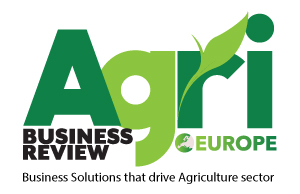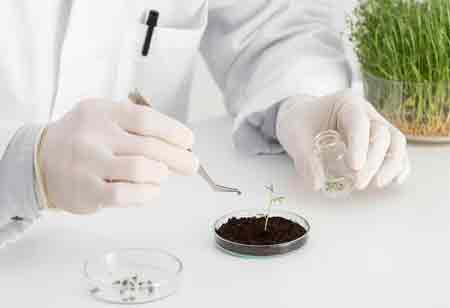Thank you for Subscribing to Agri Business Review Weekly Brief
Viticulture Reimagined: Air-Blast Sprayers and the Future of Crop Protection
Modern viticulture is transforming through the use of mechanized air-blast sprayers, which improve efficiency, crop protection, and sustainability while enhancing grape quality and vineyard management.

By
Agri Business Review | Monday, December 15, 2025
Stay ahead of the industry with exclusive feature stories on the top companies, expert insights and the latest news delivered straight to your inbox. Subscribe today.
The landscape of modern viticulture is constantly evolving, driven by a relentless pursuit of efficiency, sustainability, and the highest quality grape production. In this journey of innovation, few technological advancements have had as profound an impact as the transition from manual to mechanized spraying, with the air-blast sprayer at the forefront of this revolution. This pivotal shift is reshaping how vineyard managers protect their valuable crops, optimize resources, and ultimately, cultivate the exceptional fruit that forms the foundation of the world's finest wines.
From Manual Labor to Mechanized Precision
For generations, the quintessential image of vineyard management involved teams of workers meticulously tending to each vine, often with backpack sprayers, in a labor-intensive and time-consuming process. While this manual approach offered a degree of precision, its scalability and efficiency were inherently limited. As vineyards expanded and the demands for consistent quality grew, the need for a more effective and uniform method of applying essential crop protectants became increasingly apparent. This necessity paved the way for the advent of mechanization, and specifically, the development of air-blast sprayer technology.
At its core, the principle behind an air-blast sprayer is elegantly practical. These sophisticated machines utilize a powerful fan to generate a high-velocity stream of air, into which a precisely metered amount of liquid spray is introduced, creating a fine mist. This turbulent, air-assisted plume is then directed into the vineyard canopy. The force of the air does more than simply carry the droplets; it actively opens up the dense foliage, allowing the protective spray to penetrate deep within the canopy and coat all surfaces of the leaves and fruit clusters. This comprehensive coverage is a significant departure from the often superficial application of manual methods.
The Mechanics and Advantages of Air-Blast Spraying
The operational advantages of this technology are manifold and have been a key driver of its widespread adoption. The most immediate and tangible benefit is a dramatic increase in operational efficiency. A single operator with an air-blast sprayer can treat a significantly larger area of vineyard in a fraction of the time it would take a team of manual sprayers. This enhanced speed of application is not merely a matter of convenience; it is a critical factor in effective pest and disease management. When faced with the rapid onset of a fungal outbreak or an insect infestation, the ability to respond quickly and treat the entire vineyard promptly can be the difference between a healthy harvest and significant crop loss.
Beyond speed, the uniformity of application achieved by air-blast sprayers is a key factor in their transformative impact. The turbulent air stream ensures a consistent and even distribution of the spray material, minimizing the risk of under-application in some areas and over-application in others. This uniformity is crucial for ensuring that every part of the vine receives the necessary protection, resulting in a healthier and more homogeneous crop. The ability to precisely calibrate the spray volume and droplet size also enables a more targeted and practical application, thereby maximizing the efficacy of the crop protection products.
Precision Spraying and Sustainable Resource Management in Viticulture
The mechanization of spraying has also ushered in a new era of resource management in viticulture. By ensuring that the spray is directed precisely where it is needed – onto the canopy – and by minimizing off-target drift, air-blast sprayers contribute to a more responsible use of resources. The optimized application rates enable growers to achieve adequate control with a more judicious use of plant protection products. This not only has positive economic implications but also aligns with the growing industry-wide emphasis on sustainable production practices.
The influence of air-blast sprayers extends beyond the immediate task of crop protection, impacting the broader rhythm and structure of vineyard operations. The reduction in labor requirements for spraying frees up valuable human resources to be allocated to other critical tasks, such as canopy management, pruning, and harvesting. This optimization of the workforce allows for a more strategic and efficient allocation of labor throughout the growing season.
The evolution of vineyard spraying technology continues unabated. The integration of advanced technologies, such as GPS, sensor systems, and variable-rate application capabilities, is further enhancing the precision and intelligence of mechanized spraying. These innovations are paving the way for a future where spray applications can be tailored to the specific needs of individual blocks, rows, or even individual vines, marking the beginning of an era of hyper-precision viticulture. This ongoing refinement of air-blast sprayer technology underscores its enduring importance as a cornerstone of modern, efficient, and high-quality grape production. The journey from the handheld sprayer to the sophisticated, air-assisted machine is more than just a technological leap; it represents a fundamental shift in the art and science of cultivating exceptional vineyards.





